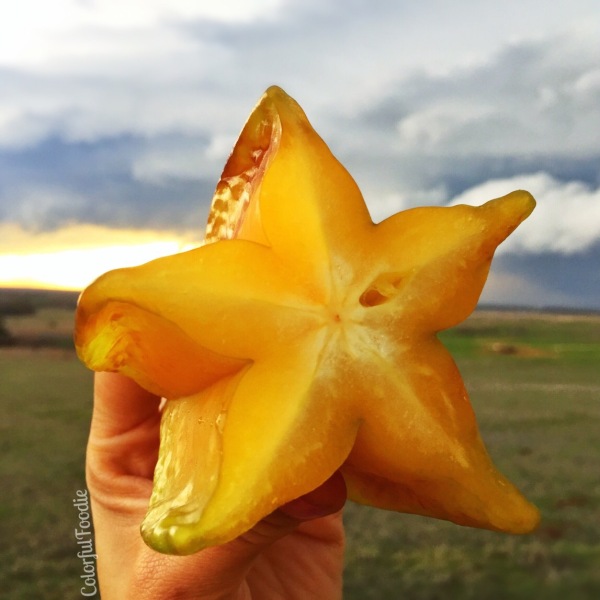
Star fruit, also known as carambola in Brazil, is a star ⭐️ shaped ? tropical fruit with sweet and sour flavor. I grew up eating this in Brasil, but really it is native to Malayan peninsula and cultivated in many parts of Southeast Asia, Pacific islands and China. Although abundant and plentiful, carambola is yet to gain popularity, especially in the western world, so you should definitely try it.
The good:This food is very low in Saturated Fat, Cholesterol and Sodium. It is also a good source of Pantothenic Acid and Potassium, and a very good source of Dietary Fiber, Vitamin C and Copper.
The Bad: Star fruit is quite high in sugar, so must consumed in moderation!
It’s comes as no surprise that the greatest amount of nutrients in star fruit is derived from vitamin C, providing 76 percent of the daily recommended value in a single one-cup serving.
The C content in star fruit helps ward off colds, flu, and any other type of infection. Science has shown that individuals in extreme arctic climates, such as military personnel, skiers, or researchers, experience a significant risk reduction – as much as 50 percent – for developing a cold when ingesting healthy amounts of vitamin C. Another reason vitamin C is called an essential vitamin is because it’s needed by the body to form collagen in the bones, cartilage, muscle, blood vessels, and aids in the absorption of iron. Also, one of the most notorious consequences of a lack in vitamin C is scurvy, which early sailors discovered and remedied with all types of tropical fruits, including star fruit. Although it’s rare, scurvy can have severe consequences, so treatment for patients with scurvy typically begins with vitamin C.
Smaller amounts of dietary fiber, copper, pantothenic acid, and potassium (which can prevent muscle cramps by increasing blood circulation) are important components of this fruit. B-complex vitamins like folates, riboflavin, and pyridoxine (Vitamin B6) are also present and team up to perform various synthetic functions inside the body, such as forming metabolizing enzymes.
The average star fruit contains around 30 calories (fewer than any other tropical fruit per serving), so with its high fiber content, it’s a great choice for anyone wanting to lose weight, prevent constipation, and keep their system running smoothly. It also helps prevent the absorption of LDL (“bad”) cholesterol while protecting the colon from toxic substances, by binding to cancer-causing chemicals that happen to be passing through.
The antioxidants offer their own benefits, including the neutralization of harmful free radicals that can cause inflammation. Flavonoids such as quercetin, epicatechin, and gallic acid offer this benefit, as well.
Traditional Brazilian folk medicine made use of star fruit as a diuretic, an expectorant, and cough suppressant. The leaves and fruit have been used to stop vomiting; placed on the temples to ease headache; for poultices to relieve chickenpox and rid the body of parasitic infestation. Powdered seeds reputedly have a sedative effect. However, dialysis patients or those with possible renal failure symptoms have reportedly developed neurological symptoms, and are advised to strictly avoid eating star fruit.
However, consume star fruits in moderation because they contain fructose, which may be harmful to your health in excessive amounts.
Xoxo, Ana?
Sources:
